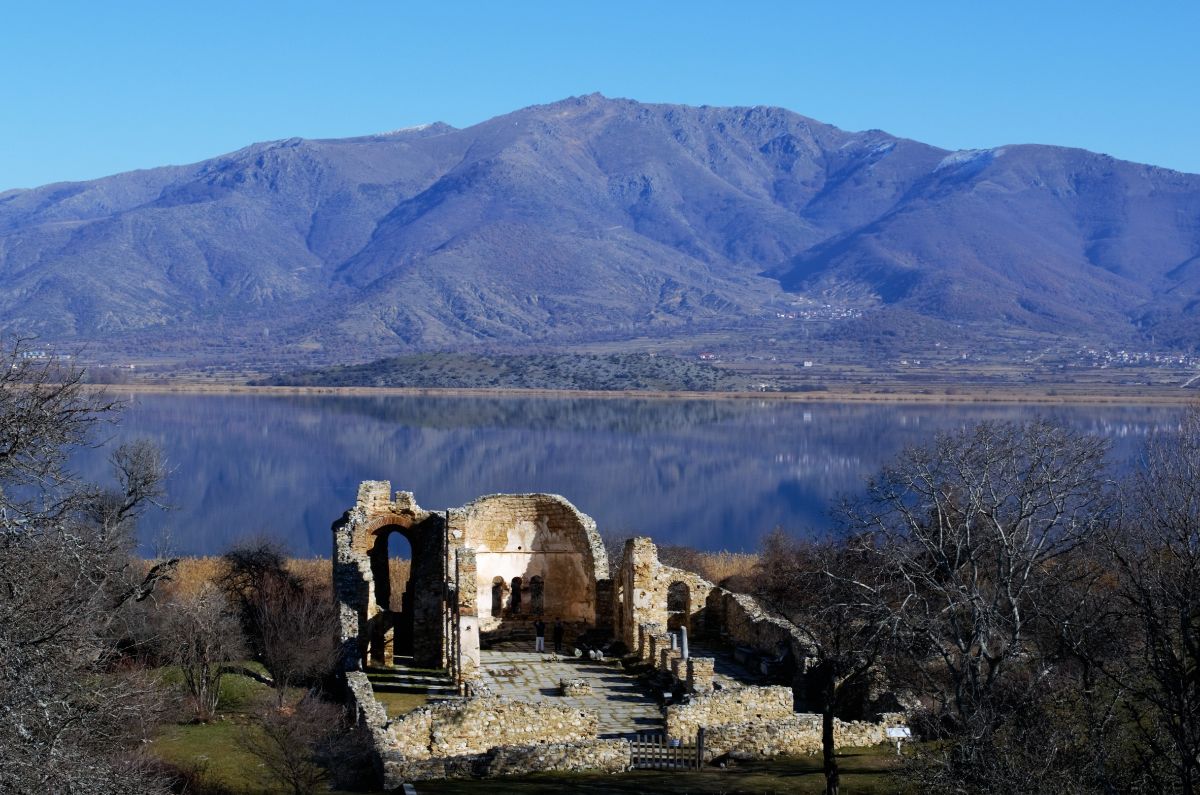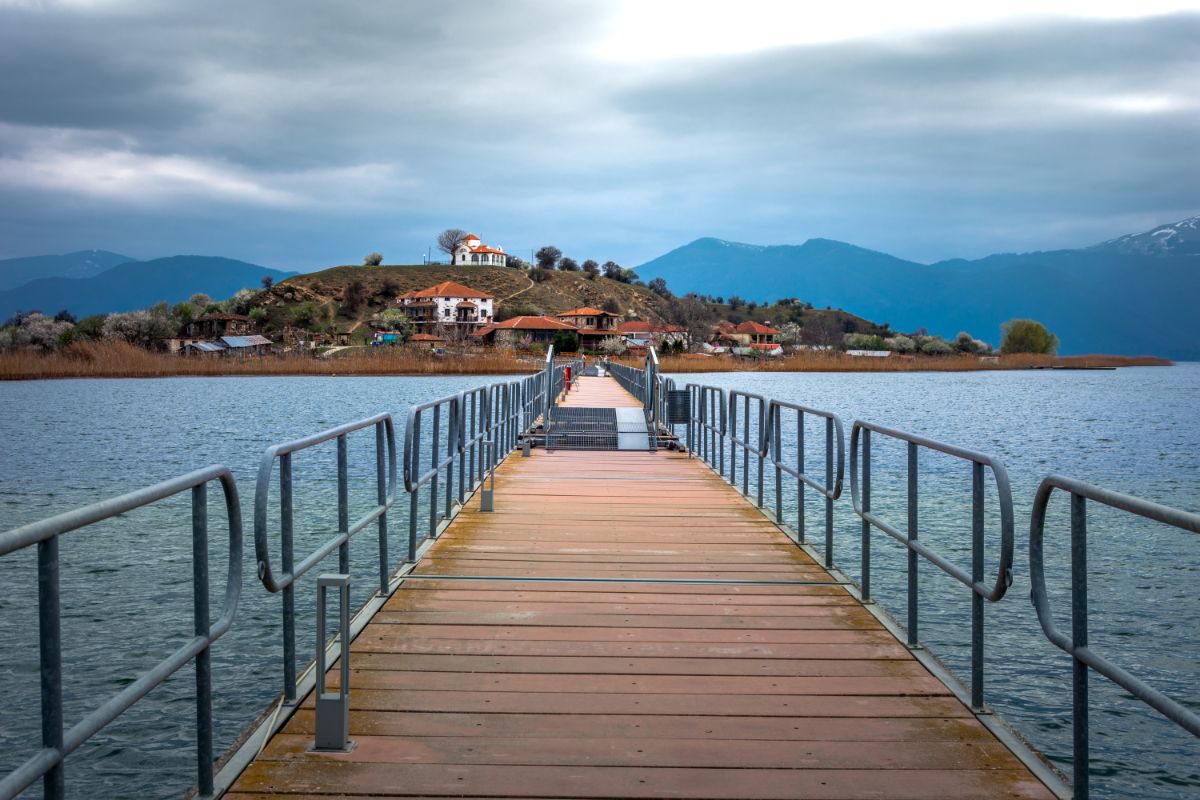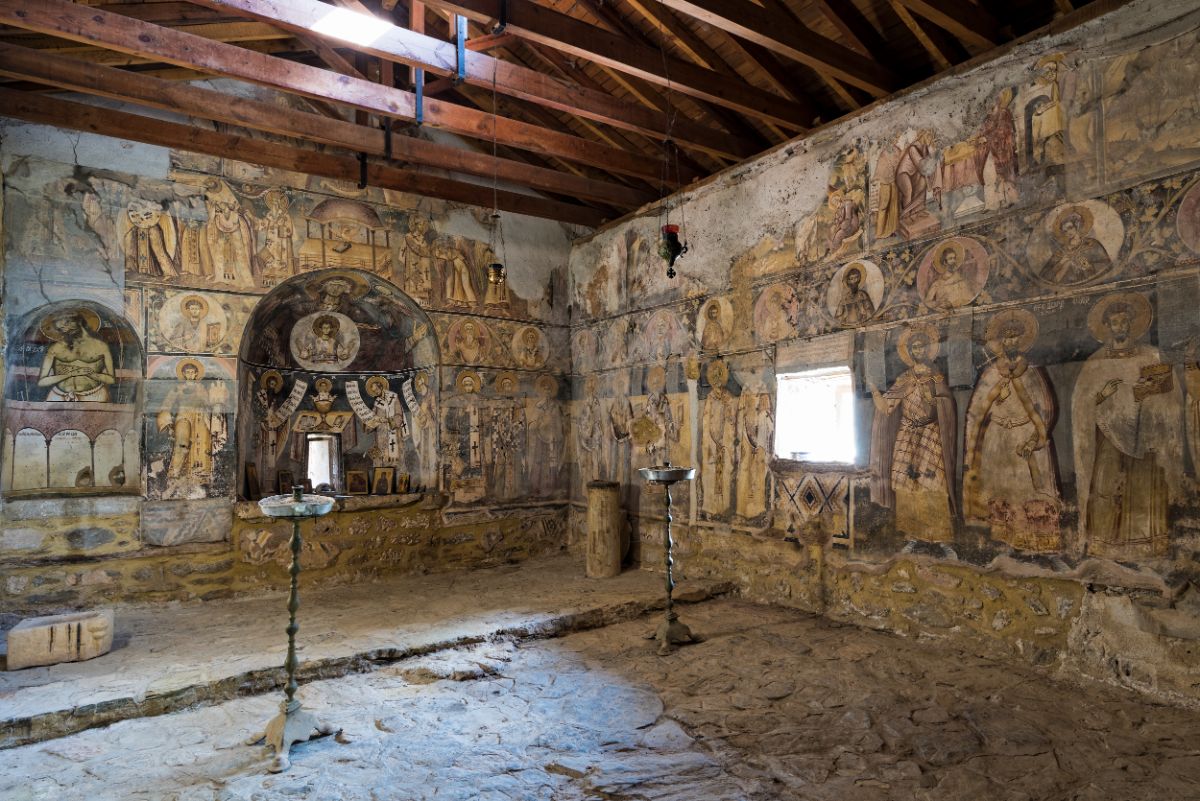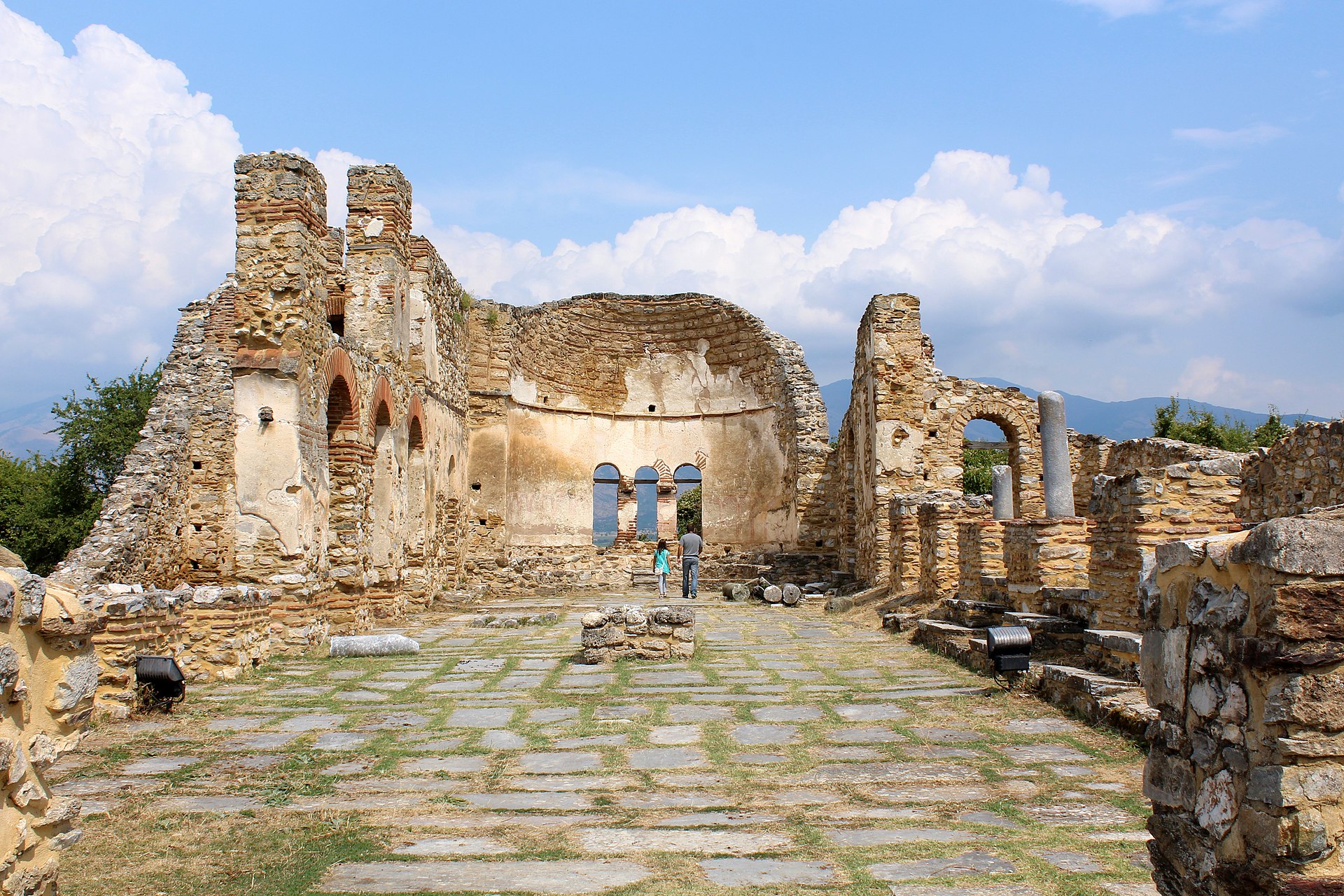On the edge of the Florina region, you’ll find the serene settlement of Agios Achilios, sprawling verdantly across the shallow, marshy waters of Mikri Prespa lake. The tiny island with a population of 24 is one of Greece’s most isolated zones, where human beings coexist harmoniously with their lush habitat, and is known for its rich history and bounteous beauty.
Inhabitants largely rely on fishing in the lake and you’ll see their boats docked at a small pier, in a postcard-perfect setting. Meanwhile, the island’s road network is almost non-existent and there are no cars or other vehicles on the island, which only adds to its rugged charm.
Named after a 4th-century Achilios, who was the metropolitan of Larissa in Thessaly, the island was challenging to reach until in 2000 a floating footbridge was built connecting it to the mainland.
The 650m-long footbridge (the first of its kind to be built in Greece), significantly improved the islanders’ lives, no longer obliging them to take risky journeys across the frozen lake during winter, while making Agios Achilios open to visitors who have helped boost its income. Today, tourists head there to enjoy the lake views, rambling greenery and wildlife, to eat traditional local fish and meat dishes at the local taverna, and even stay at the island’s simple yet charmingly cosy guesthouse.
During the Byzantine epoch, Agios Achilios was an important religious centre, due to a geographical location that allowed for seclusion, combined with a majestic background of mountains covered in thick forests. The remains of five churches have been found on the island, with the Agios Achilios Basilica being the best-known among them.
The Agios Achilios Basilica, only a small part (on the east side) of which remains standing today, was thought to be a burial chapel that was built in just 3 years, between 983 and 986 AD by the Bulgarian tsar Samuel. A tomb preserved in the church is thought to have contained the relics of Agios Achilios. Four other graves were found in the church’s southern aisle. Soon after the area passed into the hands of Byzantium, becoming the seat of the Byzantine diocese until the 15th century. Few remains of frescoes from the basilica’s walls have been placed in the Archaeological Museum of Florina. The church was excavated in 1978.
There are other, lesser-known churches on the island, such as the Dodeka Apostoli Basilica, the Panagia Porfira monastery, with frescoes in its catholicon, Agios Dimitrios church and Agios Georgios church.
During summer, the Prespes Festival, an annual, four-day long live music, dance and theatre event, takes place in and around the Basilica under the stars, in an Instagrammably beautiful setting. The basilica is also beautiful in the autumn when the vibrant shades of orange, gold and reddish stone that it is built from contrast with the moody grey of clouded skies.
Don’t leave Agios Achilios without taking a full walk around the island, following the path that connects its two sides. It’s not a long route and it will give you a chance to see the island’s landscapes. It’s also well worth walking up to the large cross atop the island’s hill and enjoying the lovely view over the entire Mikri Prespa lake.
Read also:
Northwestern Greece’s wildlife sanctuary in the Prespes lakes
Prespa Lakes: 5 top experiences in Greece’s water paradise
10 experiences worth having in Prespes










